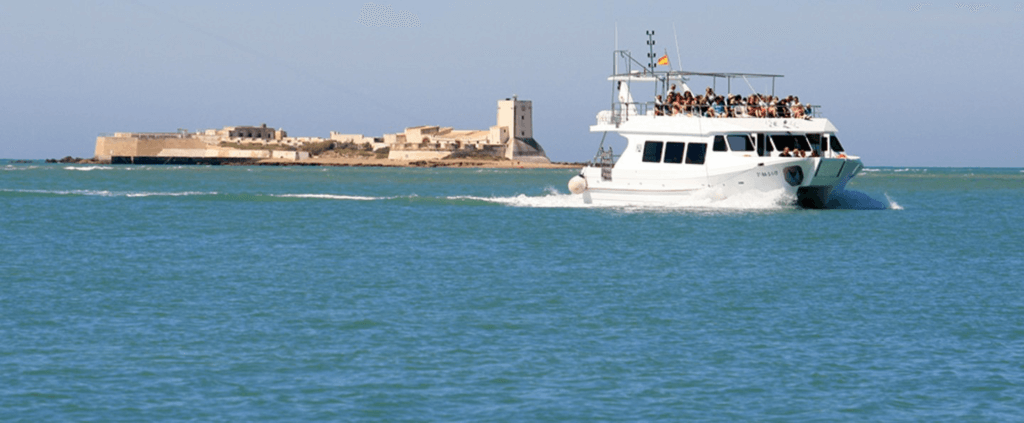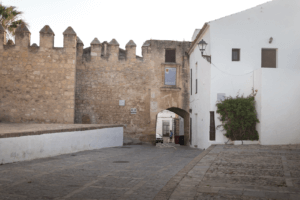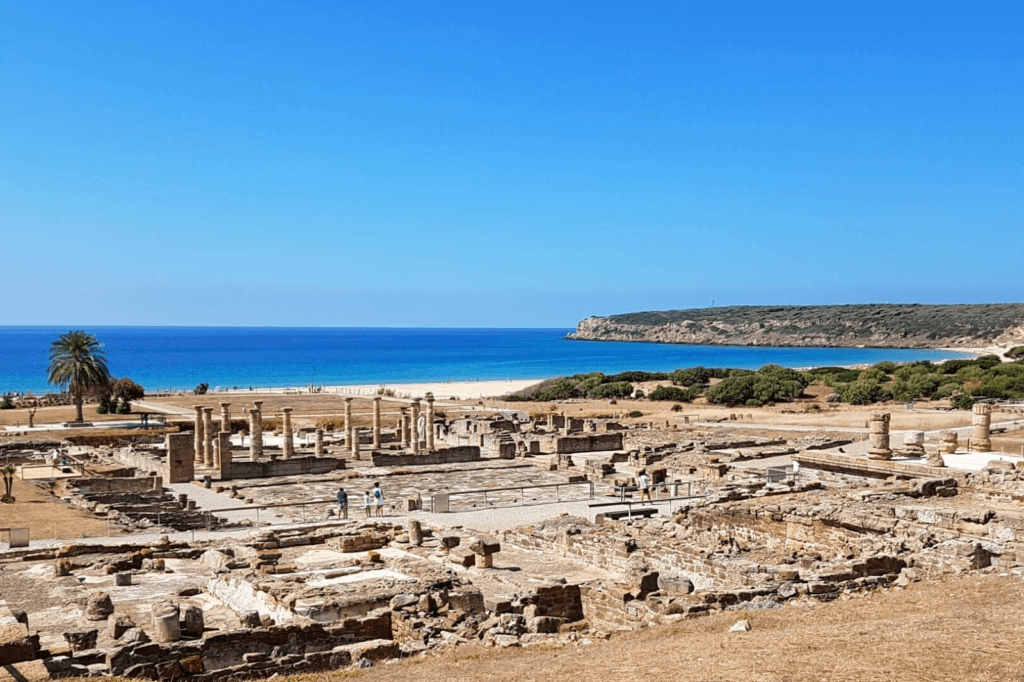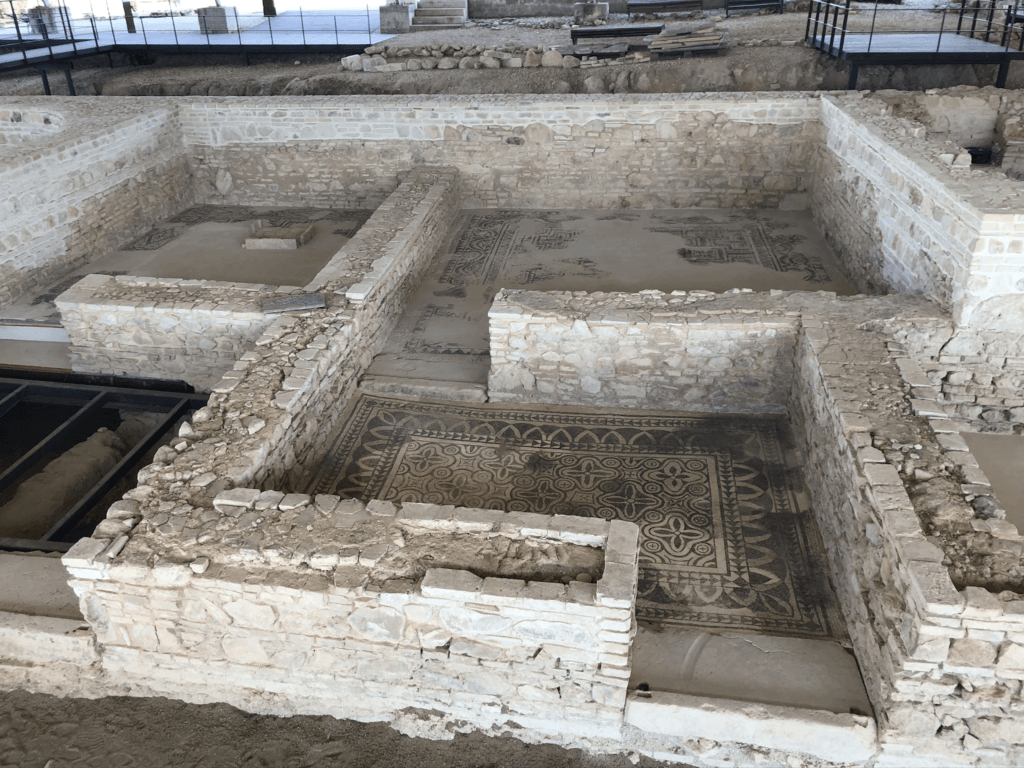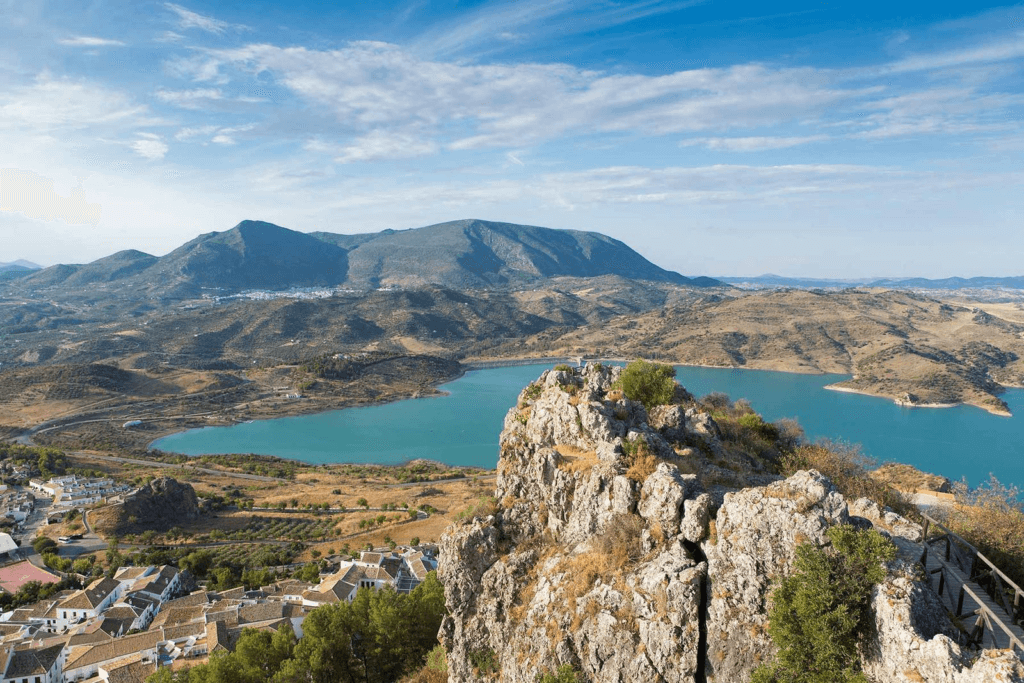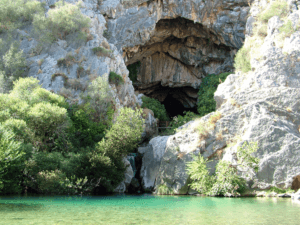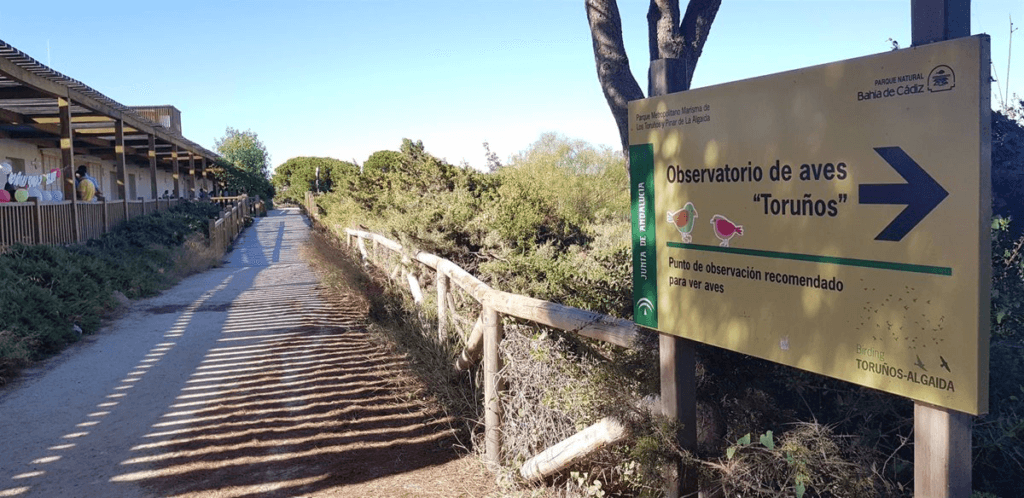En este post podrás leer:
Must-Do Excursions in Cádiz
In Cádiz, there are routes and excursions that are absolutely essential for discovering both its rich historical heritage and stunning natural surroundings. One of the most recommended is the White Villages Route — a journey through charming towns like Arcos de la Frontera, Grazalema, and Zahara de la Sierra, known for their whitewashed houses and narrow, winding streets. These villages are surrounded by mountains and breathtaking landscapes, making them a perfect destination for nature lovers.
As if that weren’t enough, there’s also a fantastic route through the La Breña and Marismas del Barbate Natural Park, an ideal spot for those in search of peace and tranquility. In addition to enjoying the serenity, you’ll get to discover the local flora and fauna that thrive in the area.
Another excellent option is a Guided Tour of Cádiz, where you’ll explore the city’s historic center, its most iconic monuments, and streets brimming with history. A specialized guide will accompany you along the way. The tour also includes a stop at La Caleta beach — where both the guide’s stories and the ocean views enhance the experience, offering a complete and immersive look at the soul of the city.
And for those who want to discover every hidden corner of the White Villages of Cádiz, we highly recommend the Guided Tour of the White Villages of Cádiz.
Arcos de la Frontera
Excursions Around Cádiz: Beaches and Water Sports
Cádiz doesn’t just captivate with its history and lively street atmosphere—it also offers a natural paradise for sea lovers and adventure seekers. From long stretches of sandy coastline to hidden coves perfect for unwinding, the province has countless options for exploring the coast. And if you’re after an adrenaline rush, this is the perfect spot to try surfing, paddleboarding, kayaking, diving, and more. Ready to discover the most active and refreshing side of Cádiz?
The Best Beaches in Cádiz for a Perfect Day Out
Cádiz is home to many beautiful beaches perfect for a full day of relaxation and fun. Here are some of the top beaches in the province:

- Playa de la Victoria (Cádiz city): One of the most iconic beaches in the city. Surrounded by restaurants and bars, it’s a great place to spend the whole day, from a sunny morning to a dinner by the sea.
- Playa de Bolonia (Tarifa): Famous for its massive sand dunes and natural beauty, this beach also features the nearby Roman ruins of Baelo Claudia—perfect for combining nature and culture. It’s also a top spot for windsurfing and kitesurfing.
- Playa de Zahara de los Atunes (Tarifa): With fine sand and crystal-clear waters, this is the ideal beach for those seeking peace and quiet in a less crowded setting. A perfect escape to disconnect.
- Playa de la Barrosa (Chiclana de la Frontera): A family favorite, this beach offers plenty of beach bars (chiringuitos) and water activities, making it a fantastic option for a fun-filled day.
- Playa de los Lances (Tarifa): Known as one of the best wind sports beaches in the area, it also boasts a wide expanse of sand and stunning scenery. Great for both active sports and laid-back nature lovers.
- Playa de Mangueta (Sanlúcar de Barrameda): A quieter, lesser-known beach, ideal for those looking to escape the crowds and enjoy a peaceful day by the sea.And if you’re looking to take your adventure even further, we recommend the “Excursions to Tangier from Tarifa” a perfect day trip that adds an exotic twist to your Cádiz getaway.
Playa de Bolonia, Tarifa
Surf and Water Sports in Tarifa and Caños de Meca
As we’ve seen, Cádiz is home to some of the best beaches in Spain for water sports especially surfing. Two of the top destinations for wave seekers and water sport lovers are Tarifa and Caños de Meca.
Tarifa is known as the “wind capital” of Europe, thanks to its strong and consistent winds that make it perfect for kitesurfing and windsurfing. Beaches like Playa de los Lances offer ideal conditions for these sports. The town has a vibrant surf culture, with plenty of schools and rental options for all levels, from beginners to pros.
Caños de Meca, on the other hand, is a quieter, more natural retreat. Its beaches, such as Los Caños and El Palmar, are ideal for surfing, offering clear waters and consistent waves. While it may not be as windy as Tarifa, it makes up for it with a laid-back atmosphere and fewer crowds—perfect for surfers looking to enjoy the waves in peace.

Playa de Tarifa Playa de Caños de Meca
Boat Trips Around the Bay of Cádiz
Exploring the Bay of Cádiz by boat is a fantastic way to enjoy the region’s scenic beauty, rich history, and natural surroundings—whether you’re after a relaxing ride or a more adventurous experience. There are several types of boat excursions available around the bay.
One of the most popular options is the panoramic boat tour, offering stunning views of Cádiz and its coastline. During the trip, you’ll pass iconic landmarks such as the Cathedral of Cádiz, San Sebastián Castle, Playa de la Victoria, and other major sights.
Some tours focus on marine wildlife watching, giving passengers the chance to spot dolphins, turtles, and other local marine species in their natural habitat. These excursions are perfect for families and nature lovers alike.
For those with an interest in history and culture, there are also historical boat tours that explore Cádiz’s maritime legacy. These journeys often include commentary on the city’s role in Spanish naval history, its importance as a trade port, and its connection to significant naval battles.
If you’re interested in learning more about all the different types of boat tours available in the Bay of Cádiz, check out: “Boat Tour Cádiz” for detailed options and schedules.
Boat tour Sancti Petri coast.
Excursions in and Around Cádiz: Heritage and Historical Legacy
Beyond its beautiful beaches and lively coastal vibe, Cádiz is a land steeped in history. From ancient Phoenician civilizations to medieval castles and Baroque monuments, the province preserves a rich and fascinating legacy. These excursions are like stepping into the past, revealing the cultural wealth of one of the most historically significant regions in Europe. Ideal for those looking to discover the true soul of Cádiz through its heritage.
The Castle Route and Historical Fortifications
Located in southern Spain, the province of Cádiz is a territory full of history, shaped by the influence of various ancient civilizations over the centuries. The Castle and Historical Fortifications Route is a must for lovers of history, architecture, and culture. This journey takes you through impressive castles, defensive walls, and fortresses ranging from the medieval era to more modern times.
The route begins in the city of Cádiz itself, where you can visit key defensive structures like the Cathedral of Cádiz and the Tavira Tower, both of which once played a role in protecting the city and the bay. From the capital, the route extends inland and along the coast, with highlights such as the Castle of Sancti Petri in Chiclana—built on an islet off the coast—and the Castle of Castellar, an impressive fortress perched on a rocky hilltop.
You can also explore the Late Medieval Castle of Alcalá de los Gazules, the Castle of Jimena de la Frontera in the Ronda mountains, and the Fortress of Santa Catalina at the port of Cádiz.
Along the way, visitors can discover additional walls and defensive structures in towns like San Fernando, Conil de la Frontera, and Vejer de la Frontera—all of which were designed to repel invasions and protect Cádiz’s coast, a key defensive point during the Early Modern period.
This route not only offers a deep dive into history, but also takes visitors through stunning natural landscapes. Many of these castles are surrounded by natural parks such as the Sierra de Grazalema and the Bay of Cádiz Natural Park, adding scenic beauty to the cultural experience.
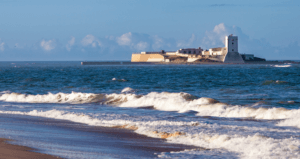
Castillo de Sancti Petri Muralla de Vejer de la Frontera
Roman Cádiz: Baelo Claudia and the Archaeological Site
Thanks to its strategic location between the Atlantic Ocean and the Mediterranean Sea, the province of Cádiz has played a key role throughout history. During Roman times, the region saw significant development—especially in Baelo Claudia, one of the most important archaeological sites from the Roman era in the province.
Baelo Claudia is located in the municipality of Tarifa, right by Bolonia Beach. Founded in the 2nd century BCE, the city became a vital center for the production of salted fish and garum, a fermented fish sauce highly prized in Roman cuisine. Its port also made it a bustling hub for trade with other parts of the Roman Empire.
What makes Baelo Claudia truly special is its excellent state of preservation, offering a detailed look at the layout of a Roman city. Visitors can explore the Roman theatre, the forum, the Temple of Isis, the baths, and the defensive city walls. You can also see the remains of garum factories and fish-salting warehouses, which highlight the economic engine of the city. The main street, known as the Cardo Maximus, is still visible, allowing you to imagine daily life in this thriving coastal town.
The site also includes an interpretation center where visitors can learn more about the history of Baelo Claudia, everyday life in the city, and the importance of commerce in the Roman Empire. The surrounding landscape featuring Bolonia’s sand dunes and proximity to the Strait of Gibraltar Natural Park adds even more appeal to the visit, combining rich cultural heritage with natural beauty.
Baelo Claudia is an essential stop for anyone interested in ancient Roman history. It offers a rare opportunity to see firsthand how people lived in a coastal Roman city and how it connected with the wider ancient world. Today, the site stands as a remarkable testament to Cádiz’s Roman legacy and continues to captivate historians, archaeologists, and visitors alike.
Yacimiento arqueológico Baelo Claudia
Discovering Phoenician Influence
The province of Cádiz is a key location for understanding the history of ancient Mediterranean civilizations, particularly the influence of the Phoenicians. Considered one of the most important peoples of Antiquity, the Phoenicians left a lasting mark on the culture and development of the region. Cádiz, known in ancient times as Gadir, is one of the oldest cities in Europe, with its foundation dating back to around 1100 BCE, attributed to Phoenicians from Tyre (modern-day Lebanon).
Gadir (Cádiz) was one of the Phoenicians’ primary settlements on the Iberian Peninsula, and their influence can be seen in several aspects of the city’s archaeology and heritage. One of the most significant discoveries of this influence is the site at Plaza de la Catedral, where remains of an ancient Phoenician temple dedicated to the gods of their pantheon have been uncovered. These ruins reveal the religious significance of the city and the Phoenicians’ connection to their ancestral beliefs.
Another important site is the Álamos archaeological site, located near modern Cádiz. Here, significant remains of homes and warehouses have been found, which likely belonged to Phoenician merchants. Fragments of Phoenician pottery have also been uncovered, suggesting that the Phoenicians not only engaged in trade but also settled permanently in the region. Today, the Casa del Obispo and the Museum of Cádiz house a significant collection of Phoenician artifacts that help visitors better understand the profound impact Phoenicians had on the city and the history of the region. These objects show how the Phoenicians contributed to Cádiz’s economic, social, and cultural development.
If you’d like to learn more about the founding of Cádiz and the iconic streets established by the Phoenicians, we invite you to join a Free Tour of Cádiz.
Yacimiento de los Alamos
Excursion to Jerez: Wineries, Horses, and Flamenco
Jerez de la Frontera, one of the most iconic cities in the province of Cádiz, is an unmissable destination for those wanting to immerse themselves in authentic Andalusian culture. Famous worldwide for its sherry wine, the city is also renowned for its equestrian tradition and flamenco heritage—three pillars that define its identity and make a visit to Jerez a truly unique experience.
One of the city’s main attractions is its wineries, where the world-famous Jerez wine is produced, a product that has become a symbol of the region. In Jerez and its surroundings, you will find some of Spain’s most historic and important wineries, such as Bodegas González Byass, known for its Tío Pepe brand, and Bodegas Lustau. At these wineries, visitors can take guided tours to discover the wine-making process, from the selection of the grapes to the aging process in the soleras. During these tours, tourists have the opportunity to taste different types of sherry, including fino, oloroso, and Pedro Ximénez, while learning about the traditional techniques that have been perfected over centuries.
Additionally, Jerez is also a city deeply connected to horses. The Royal Andalusian School of Equestrian Art is one of the most important centers in the city and a place where equestrian arts are turned into a spectacular show. Here, horses and riders are trained to perform the choreographies seen in the Classical Dressage and other equestrian performances.
Jerez wouldn’t be Jerez without flamenco, the heart and soul of Andalusian music and dance. The city boasts a rich flamenco tradition, and in its taverns, peñas (flamenco clubs), and theatres, visitors can enjoy passionate performances of singing, dancing, and guitar playing. The Festival de Jerez, held annually, is one of the most important events in the flamenco world, where top national and international artists gather to showcase their talent and keep this deep-rooted tradition alive.
To fully immerse yourself in Jerez’s world of wine and flamenco two of the city’s most defining features we invite you to join a Free Tour of Jerez, where you can explore every corner of the city and learn about its vibrant local festivals and cultural traditions.

Real Escuela de Arte Ecuestre Bodegas Gonzales Byass
Excursions from Cádiz: Nature at Its Purest
If you’re looking to disconnect from urban life and surround yourself with breathtaking landscapes, the surroundings of Cádiz offer the perfect escape. From natural parks with hiking trails through pine forests and marshlands to cliffs overlooking the Atlantic and mountain ranges full of life, this Andalusian province is a true paradise for nature lovers. Whether you’re into hiking, birdwatching, cycling routes, or simply breathing fresh air, Cádiz’s wild beauty will amaze you at every turn.
Sierra de Grazalema Natural Park: Hiking and Scenic Viewpoints
The Sierra de Grazalema Natural Park, located in the province of Cádiz, is one of the most spectacular destinations for nature and hiking enthusiasts. Declared a UNESCO Biosphere Reserve, the park is known for its dramatic mountainous landscape, lush forests, and towering cliffs—making it the ideal setting for outdoor adventures in nature.
One of its most iconic trails is the Pinsapar Trail, which leads hikers through one of Spain’s most unique forests: a Spanish fir (pinsapo) forest, a species native to the Grazalema range. This trail offers an immersive experience where you can observe the park’s rich flora and fauna, including griffon vultures, mountain goats, and a wide variety of wild plants.
The park also features scenic viewpoints that offer stunning panoramic vistas. The Mirador de los Acebuches, near the village of Grazalema, is one of the best-known spots, providing breathtaking views of the valley—especially at sunrise or sunset. Another highlight is the Puerto de las Palomas Viewpoint, one of the highest points in the range, offering sweeping views over both the Grazalema valleys and the mountains of Málaga.
The park is also home to charming white villages such as Grazalema, Ubrique, and Benaocaz, where visitors can soak up local culture and enjoy regional delicacies like goat cheese and extra virgin olive oil—a perfect complement to a day spent exploring nature.
Parque Natural de la Sierra de Grazalema
Excursión al Parque Natural de Los Alcornocales
El Parque Natural de Los Alcornocales, es uno de los espacios naturales más grandes y ricos en biodiversidad de Andalucía. Con una extensión de más de 170.000 hectáreas, este parque es un auténtico paraíso para los amantes de la naturaleza, ofreciendo un paisaje de montañas, bosques, valles y ríos que invitan a la exploración y al disfrute al aire libre.
El senderismo es una de las actividades más populares en el parque. Entre las rutas más conocidas se encuentra el Sendero de los Alcornocales, un recorrido que atraviesa algunos de los rincones más emblemáticos del parque, como los valles fluviales de los ríos Guadiaro y Majaceite, y permite observar la flora y fauna típicas de este ecosistema. Esta ruta es ideal para disfrutar de la tranquilidad del bosque y descubrir los secretos naturales de la zona. Además, se pueden encontrar caminos que conducen a las Cueva del Gato o al Cerro de las Pitas, que ofrecen unas vistas espectaculares de la sierra y de las comarcas cercanas.
El parque también es conocido por su biodiversidad, ya que alberga una gran variedad de especies animales y vegetales. Es un lugar privilegiado para la observación de aves, donde los aficionados pueden encontrar especies como el águila real, el buitre leonado, o el milano real, que surcan los cielos del parque. Además, el parque es hogar de mamíferos como el jabalí, el ciervo, la gacela y diversas especies de felinos como el gato montés. La diversidad de hábitats en el parque, que van desde los bosques de alcornoques hasta las zonas de matorral y praderas, crea un entorno perfecto para la fauna local.
Otro de los grandes atractivos del Parque Natural de Los Alcornocales es su cercanía a pueblos con encanto, como Jimena de la Frontera, Castellar de la Frontera y Torre Alháquime, que ofrecen una visión de la vida tradicional andaluza y permiten disfrutar de la gastronomía local, como el aceite de oliva y los productos derivados del corcho. Además, la Vía Verde de la Sierra es un recorrido ideal para los que buscan disfrutar de la belleza del parque a pie o en bicicleta, ya que sigue el trazado de una antigua vía de tren que conecta diversos puntos del parque.

Sendero de los Alcornocales Cueva del gato
Observación de aves en la Bahía de Cádiz
La Bahía de Cádiz es uno de los destinos más importantes para la observación de aves en el sur de España. Esta zona es una de las más relevantes en la migración de aves a nivel europeo, lo que la convierte en un lugar ideal tanto para observadores experimentados como para quienes se inician en esta fascinante actividad.
Uno de los lugares más destacados para la observación de aves es el Parque Natural de la Bahía de Cádiz, un espacio protegido que se extiende por más de 10.000 hectáreas de marismas, salinas y esteros. Aquí, los visitantes pueden disfrutar de rutas de senderismo y miradores estratégicos, como el Mirador de la Corta, que ofrecen vistas panorámicas de la bahía y permiten la observación de una gran variedad de aves. Entre las especies más comunes que se pueden avistar en este parque están la garza real, el flamenco rosa, el cormorán, el charrán común y diversas especies de patos y limícolas.
La Marisma de los Toruños, ubicada en el Parque Natural, es otro punto referente para los observadores de aves. Aquí, el paisaje proporciona el entorno perfecto para una gran variedad de aves migratorias que se detienen a descansar o alimentarse. En esta zona, especialmente en las zonas de salinas y esteros, se pueden ver especies como la águila pescadora, el río común, el avoceta y diversas especies de gaviotas.
La migración de aves es, sin duda, uno de los espectáculos más impresionantes de la Bahía de Cádiz. Durante los meses de migración, especialmente en otoño, miles de aves utilizan esta área como punto de parada en su largo viaje hacia el sur. Aves como el águila real, el milano real o el halcón peregrino se pueden avistar, mientras que diversas especies de paseriformes migratorios también eligen este espacio para descansar y alimentarse.
Además, la Bahía de Cádiz es una zona de especial interés para los ornitólogos, ya que es uno de los pocos lugares en Europa donde se pueden ver especies raras y difíciles de encontrar en otros lugares, como la alcarraza común o el somormujo lavanco. El Centro de Visitantes del Parque Natural de la Bahía de Cádiz, ubicado en la localidad de San Fernando, ofrece información sobre las mejores rutas de observación y actividades relacionadas con la avifauna de la zona.
Observatorio aves Marismas los Toruños
Excursiones para familias
Cádiz es un destino ideal para disfrutar en familia, con planes para todas las edades y gustos. Desde playas tranquilas donde los más pequeños pueden jugar sin peligro, hasta parques naturales, museos interactivos y pueblos llenos de encanto, la provincia ofrece un sinfín de excursiones pensadas para compartir momentos inolvidables. Ya sea explorando la naturaleza, conociendo animales, navegando en barco o descubriendo historias fascinantes, estas experiencias convertirán vuestro viaje en una aventura divertida y educativa para grandes y pequeños.
Visita al Parque Genovés y la Alameda Apodaca
La ciudad de Cádiz ofrece una variedad de lugares perfectos para disfrutar de una excursión en familia, y dos de los espacios más recomendados son el Parque Genovés y la Alameda Apodaca. Ambos lugares, ubicados en pleno corazón de la ciudad, combina belleza natural, historia y amplias zonas de esparcimiento, siendo ideales para pasar un día de relax en familia, rodeados de un entorno verde y lleno de encanto.
El Parque Genovés, uno de los jardines más emblemáticos de Cádiz, destaca por su exuberante vegetación, sus senderos sombreados y sus amplias zonas de césped, perfectas para que los niños corran y jueguen. La visita al parque es ideal para disfrutar de un paseo relajado, ya que sus caminos serpenteantes permiten explorar diferentes rincones llenos de árboles exóticos, fuentes y pequeños estanques.
Otro lugar fantástico es la Alameda Apodaca, uno de los paseos más pintorescos de la ciudad. Situada frente al mar, esta amplia explanada ofrece unas vistas espectaculares de la bahía de Cádiz y de la Plaza de España. La Alameda Apodaca es el lugar perfecto para dar un paseo, respirar aire fresco y disfrutar de un entorno lleno de historia.
La Alameda Apodaca está rodeada de hermosos árboles y dispone de amplias aceras, lo que la convierte en un lugar ideal para caminar con niños. También es un lugar donde se puede disfrutar de una vista panorámica del mar y de la ciudad, lo que ofrece un espacio perfecto para sentarse en los bancos y relajarse mientras se contempla el paisaje.El banco de los enamorados es uno de los elementos más conocidos de la Alameda Apodaca.
Una de las ventajas de visitar ambos lugares en familia es la proximidad entre el Parque Genovés y la Alameda Apodaca, lo que permite combinar ambas visitas en una misma excursión. Después de un paseo por el parque, se puede caminar tranquilamente hasta la Alameda Apodaca para disfrutar de sus vistas.
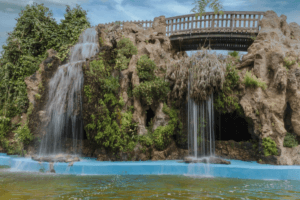
Parque Genovés Alameda apocada
Actividades en la Playa de la Victoria para los más pequeños
La playa de la Victoria es uno de los lugares más famosos de Cádiz, un lugar ideal para disfrutar en familia junto al mar. Ya sea para dar un paseo, jugar en la arena o participar en actividades acuáticas, esta playa ofrece muchas opciones para que los niños se diviertan mientras aprenden y exploran el entorno natural.
Algunas de las opciones o actividades que se pueden realizar en esta playa son:
Juegos en la arena: Su amplitud le permiten jugar con la arena, construyendo castillos, túneles, o simplemente disfrutar de juegos tradicionales como el frisbee, el balón o la paleta.
Una de las actividades favoritas de los niños es la búsqueda de conchas. En la provincia de Cádiz destacan las orejitas. La orilla de la playa está llena de pequeñas conchas y piedras.
Destacar que durante los meses de verano, la Playa de la Victoria suele contar con varias actividades especiales para los más pequeños. Parques infantiles flotantes y castillos hinchables en la playa son algunas de las atracciones más populares.
La playa de la Victoria también cuenta con un largo paseo marítimo ideal para caminar, andar en bici o patinar. Las familias pueden alquilar bicicletas y hacer un recorrido por el paseo mientras disfrutan de las vistas al mar. Para los niños que ya saben montar en bici, esta es una actividad divertida y segura para explorar la playa de una forma diferente.

Hinchables acuáticos Concurso de castillos de arena
Acuarios y museos en Cádiz
Cádiz no solo es un destino de playas y naturaleza, sino que también ofrece una rica oferta cultural que puede ser disfrutada por toda la familia. Los acuarios y museos de la ciudad proporcionan una buena oportunidad para conocer más sobre la fauna marina de una forma interactiva.
Ya sea que te interese la historia naval, la vida marina o las tradiciones gaditanas, Cádiz tiene opciones para todos los gustos. Muchos de estos espacios culturales están distribuidos estratégicamente por los principales barrios y distritos de Cádiz, lo que permite a los visitantes explorar el patrimonio museístico mientras recorren las zonas más emblemáticas de la ciudad.
El Acuario de Cádiz, está ubicado en el puerto de la ciudad. Este acuario es ideal para una visita en familia, ya que permite a los más pequeños descubrir la biodiversidad marina de la zona, a la vez que se enseñan conceptos sobre la conservación del medio ambiente marino.
El acuario tiene diversas especies marinas, desde peces y crustáceos locales hasta tortugas y otras criaturas fascinantes. Además de los tanques de agua salada, los visitantes pueden aprender sobre los ecosistemas marinos de la región, como el Mar de las Calmas en la isla de El Hierro o el Estrecho de Gibraltar.
Pero si eres amante de la historia y la arqueología, Cádiz cuenta con varios museos que le serán de gran interés:
El Museo de Cádiz. Ubicado en un antiguo convento de la ciudad. Este museo ofrece una amplia colección de arte y artefactos que abarcan desde la Prehistoria hasta la Edad Moderna.
Una de las colecciones más destacadas del museo es su colección de arqueología fenicia. Cádiz, una de las ciudades más antiguas de Europa, fue fundada por los fenicios y el museo cuenta con numerosos objetos de esa época, como figuras, cerámicas y joyas. También cuenta con una extensa colección romana, incluyendo estatuas y objetos encontrados en las cercanas ruinas de Baelo Claudia.
Por otro lado hablaremos del Museo de la Historia de Cádiz es otro de los lugares imprescindibles para conocer la tradición de la ciudad. Aquí se puede aprender sobre su evolución desde su fundación fenicia hasta la Cádiz moderna, con un enfoque especial en su papel en la historia naval y su importancia durante la edad de oro de España.
Por último, tenemos el Museo Naval. Es una de las mejores opciones para conocer la historia de la Armada Española y la relación de Cádiz con el mar. En este museo, se pueden ver maquetas de barcos, mapas históricos y objetos de la navegación, lo que ayuda a los visitantes a entender el papel que ha jugado la ciudad en la historia naval de España.

Aquarium de Cádiz Museo de Historia de Cádiz
Preguntas Frecuentes relacionadas con excursiones en Cádiz
¿Cuáles son las mejores excursiones de un día desde Cádiz?
Si estás buscando hacer excursiones de un día desde Cádiz, estas son algunas de las mejores opciones:
• Visita cultural por Jerez de la Frontera
• Parque Natural de la Sierra de Grazalema
• Tarifa y las playas de la costa de la Luz
• Ruta de los pueblo blancos
• Cabo de Trafalgar y Barbate.
¿Es posible hacer excursiones desde Cádiz sin coche?
Sí, es completamente posible hacer excursiones desde Cádiz sin coche!Cádiz tiene una excelente conectividad en transporte público.
Autobuses: La estación de autobuses de Cádiz ofrece conexiones frecuentes a pueblos cercanos y a otras ciudades de la provincia. Las rutas suelen ser bastante directas y las frecuencias son buenas, especialmente en temporada alta.
Trenes: La estación de trenes de Cádiz (Renfe) también tiene conexiones con varias ciudades importantes, como Sevilla, Jerez de la Frontera o Ronda. Además del núcleo de cercanías, que conecta diferentes localidades gaditanas.
¿Dónde contratar excursiones guiadas en Cádiz?
Puedes contratar excursiones guiadas en Oway Tour.
¿Qué excursiones incluyen transporte desde la ciudad de Cádiz?
Existen varias excursiones que incluyen transporte desde la ciudad de Cádiz, lo que te permite explorar la provincia y sus alrededores. Algunas de ellas son:
• Excursión a Jerez de la Frontera
• Excursión al Parque Natural de Doñana
• Excursión a Tarifa y las Playas de la Costa de la Luz
• Excursión pueblos Blancos




